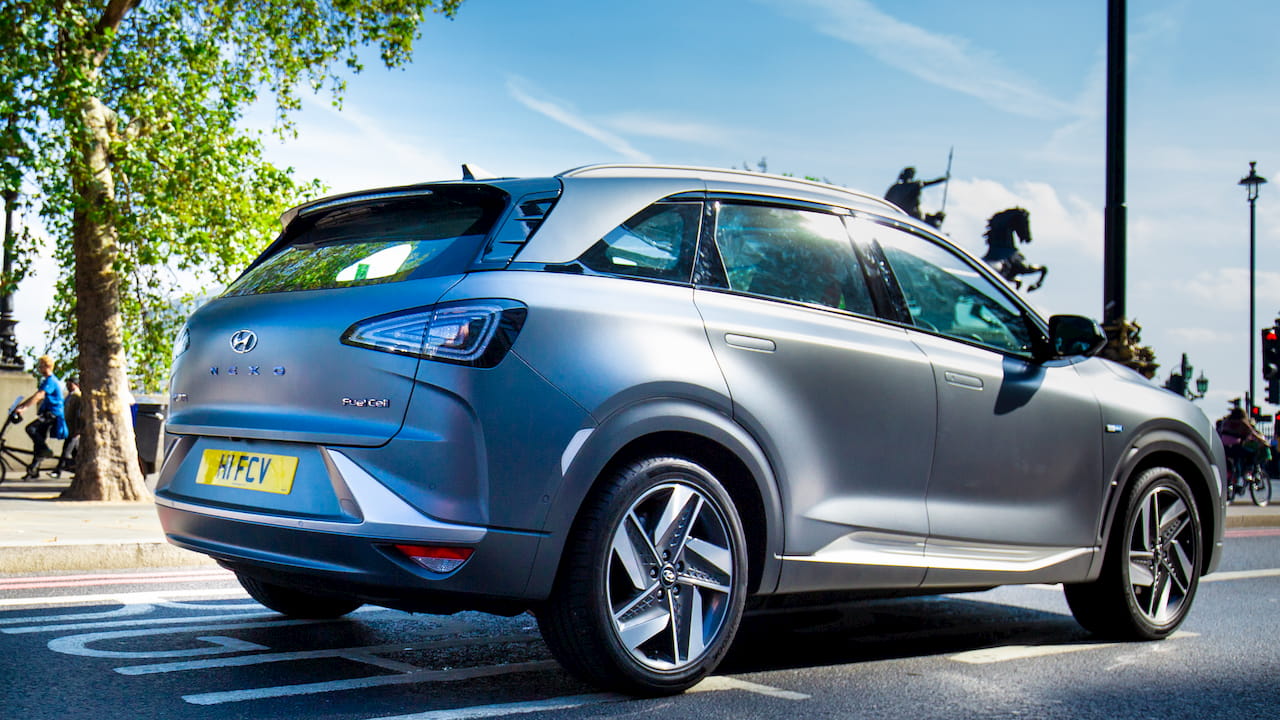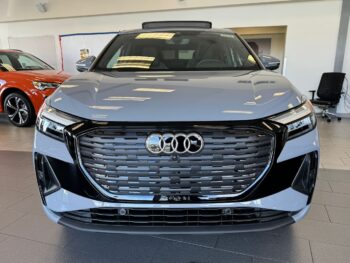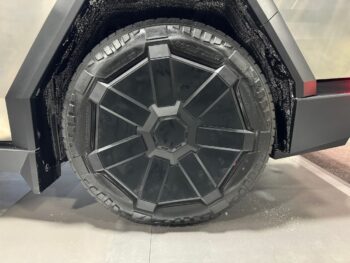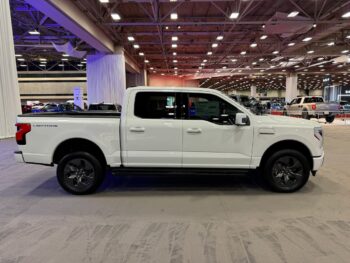Update: ‘Hyundai N Vision 74’ added and ‘Toyota Hilux hydrogen’ updated.
According to a study from Information Trends (via PR Newswire), just over 56,000 hydrogen FCEVs were sold globally by 2022, with more than 30% of them delivered in 2021 and 2022. While the demand is growing, it’s still at a basic level.
FCEV sales would not shoot up to a normal level until enough fueling stations dispense the most abundant element in the universe. However, many manufacturers consider hydrogen as the fuel of the future, an important step in their journey towards carbon neutrality, and assume that the infrastructure will improve to support these vehicles during this decade.
Note that not all vehicles in this list will manage 500 miles of range, and that is simply the upper limit based on what Hyundai’s top boss told the S.Korean president on a plant tour in 2021 regarding the new Nexo, which is the sixth car in our story. Projects like the Defender and Range Rover are not officially confirmed, and hence this is an expected list of models. The article will be updated when new information is available.
BMW iX5
BMW Group has been experimenting with limited-production FCEVs since 2000 when it launched the BMW 7 Series-based BMW 750hL. In 2021, it converted the fourth-gen X5 into a hydrogen fuel cell electric model called BMW iX5.
The BMW iX5 uses a hydrogen fuel cell electric powertrain co-developed with Toyota. The vehicle’s drive system converts hydrogen stored in two 700-bar tanks made of carbon fiber reinforced plastic into electricity in a fuel cell. It delivers an electrical output of up to 125 kW (170 PS/168 hp). Unlike some reports claim, this isn’t the world’s most powerful fuel cell stack (among passenger models); the second-gen Toyota Mirai‘s 330-cell fuel cell stack generating 128 kW (174 PS/172 hp) claims that title.
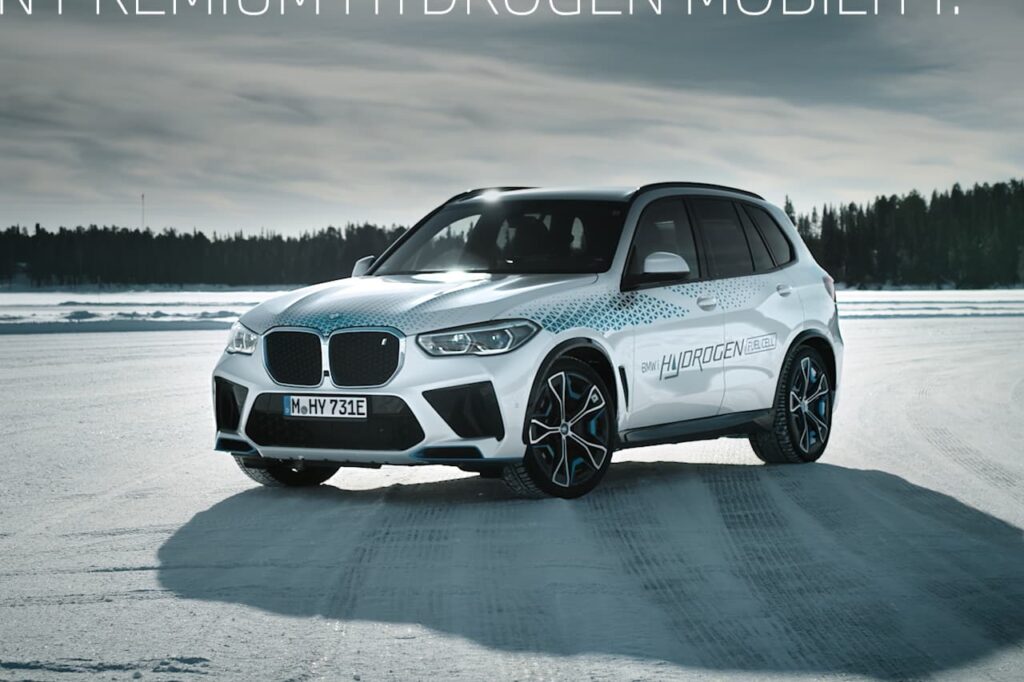
The fuel cell stack works together with an electrical motor featuring BMW Group’s fifth-gen eDrive. This motor serves as a generator in coasting overrun and braking phases, charging the traction battery with the energy generated during those processes. The electric motor’s primary function is, of course, spinning the (rear) wheels. It offers a system power of up to 295 kW (395 hp). The world’s most powerful hydrogen FCEV can accelerate from 0 to 62 mph in under six seconds and achieve a top speed of over 180 km/h (112 mph).
The iX5 has hydrogen tanks, one in the center tunnel and one under the rear seat. Filling them up takes three to four minutes, making the refueling experience similar to a gasoline or diesel vehicle. With the tanks full, the iX5 can travel 504 (313 miles) as per WLTP.
BMW Group Plant Spartanburg and BMW Group Forschungs- und Innovationszentrum (FIZ) manufacture the BMW iX5 together. The U.S.-based vehicle factory makes the base vehicle for the hydrogen model and ships it to the German R&D center in Munich.
Only 100 units of the BMW iX5 will hit the streets, but BMW Group does have a serious plan for the hydrogen car market. Frank Weber, the company’s R&D boss, has said that it is considering mass-producing (and thus launching) hydrogen models in the second half of the decade, Bloomberg reported on February 27, 2023. The German automaker is confident that prices for an EV with a larger battery and fuel cell cars “will be on par” by 2030.
BMW Group is using the iX5 as a tech demonstrator in Europe, Japan, South Korea, China, the U.S., and the Middle East. The company doesn’t plan to launch the hydrogen SUV in its current form on the market.
Rolls-Royce hydrogen car
There’s a reason why BMW Group isn’t calling it quits on hydrogen fuel cell technology and says it has a lot of potential as part of its journey to carbon neutrality. The company’s luxobarges like the BMW X7, BMW XM, and the Rolls-Royces might make more sense as hydrogen FCEVs than BEVs.
In May 2023, Rolls-Royce Motor Cars CEO Torsten Müller-Ötvös told Autocar that he wouldn’t consider hydrogen combustion engines, as that “is not the most efficient way to use hydrogen.” If a hydrogen-powered Rolls-Royce does arrive someday, it will be with fuel cells, which “are nothing different from a battery,” the brand boss added.
Müller-Ötvös said Rolls-Royce Motor Cars would pursue hydrogen fuel cell technology when the time is right. Emphasizing its seriousness about the alternative, he went on to say that it might even stop selling BEVs when it does that.
Rolls-Royce drivers wouldn’t want to deal with the fuss of BEV charging cables, but they wouldn’t want to worry about a lack of hydrogen refueling stations during their long journeys either, would they? Plus, while they can charge a BEV conveniently at home, they can’t refuel a hydrogen FCEV at their villa. At the moment, Rolls-Royce Motor Cars is “watching closely” how the hydrogen fueling infrastructure develops.
Honda CR-V FCEV
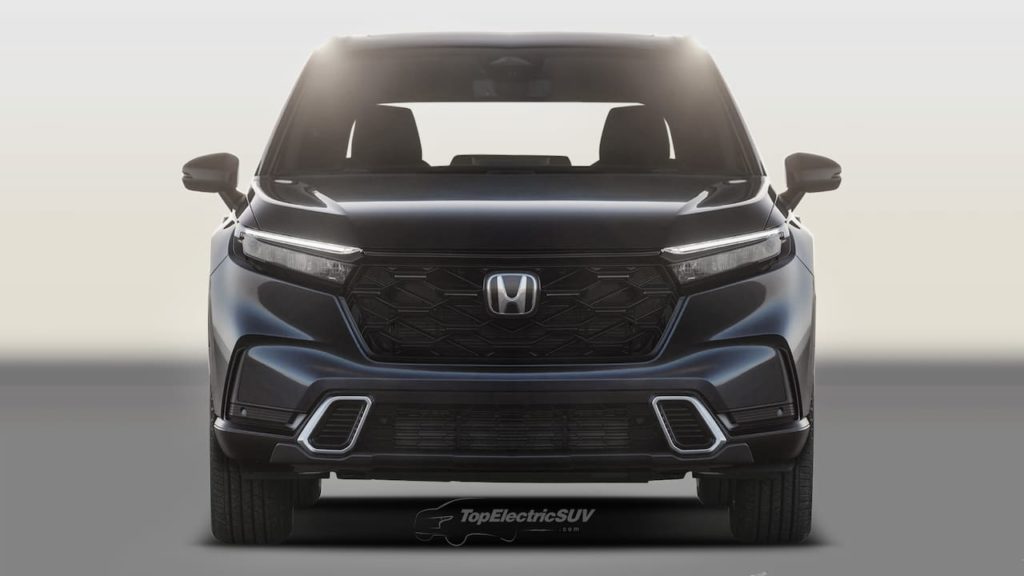
A sixth-gen Honda CR-V-based FCEV has received the green signal for launch. Production will take place at Performance Manufacturing Center (PMC) in Ohio, the facility that makes specialty vehicles like the Acura NSX. As expected, Honda has confirmed that it will be a five-seat model.
Spy pictures suggest that the Honda CR-V FCEV will feature a unique front fascia with a shorter hood, a slim upper grille, a repositioned Honda logo (located on the upper grille), a prominent, hexagonal lower grille, and visibly bigger side air inlets that have two horizontal fins. At the back, it may flaunt clear-lens tail lamps and have a revised bumper without exhaust outlets.
The Honda CR-V FCEV will be a hydrogen hybrid FCEV, with a plug-in feature that allows doubling it as a BEV. For example, in places with limited or no hydrogen fueling stations, customers will be able to simply plug it into a charger and use it as a BEV.
It’s safe to assume the battery pack of the Honda CR-V FCEV will be larger than most other fuel cell cars. While we don’t expect it to deliver 300 miles of range, the BEV component will probably be like an emergency range extender. This model will likely be similar to a PHEV, but a combination of an FCEV and a BEV (instead of an internal combustion engine) would make it a zero-emission vehicle.
The fuel cell system that goes into the hydrogen-powered CR-V will be a collaborative effort with GM. This system measures 835 mm x 605 mm x 660 mm and can be placed under the hood of a passenger car, a person in charge said, Nikkei xTECH reported on March 18, 2022. It produces 80 kW or 107 horsepower, as per the Japanese publication.
Officially, Honda expects the CR-V FCEV’s fuel cell system to be more than 2X durable than that of the 2019 Clarity Fuel Cell and reduce the model’s cost to one-third. Fuel Cell System Manufacturing, Honda and GM’s joint venture company located in Michigan, USA, will manufacture the fuel cell system. It operates within GM’s battery pack manufacturing site in Brownston, which is about 20 miles South of Detroit.
Honda is testing the CR-V FCEV in Japan and the U.S., and the company should unveil the product in the coming months.
Ineos Grenadier Hydrogen FCEV
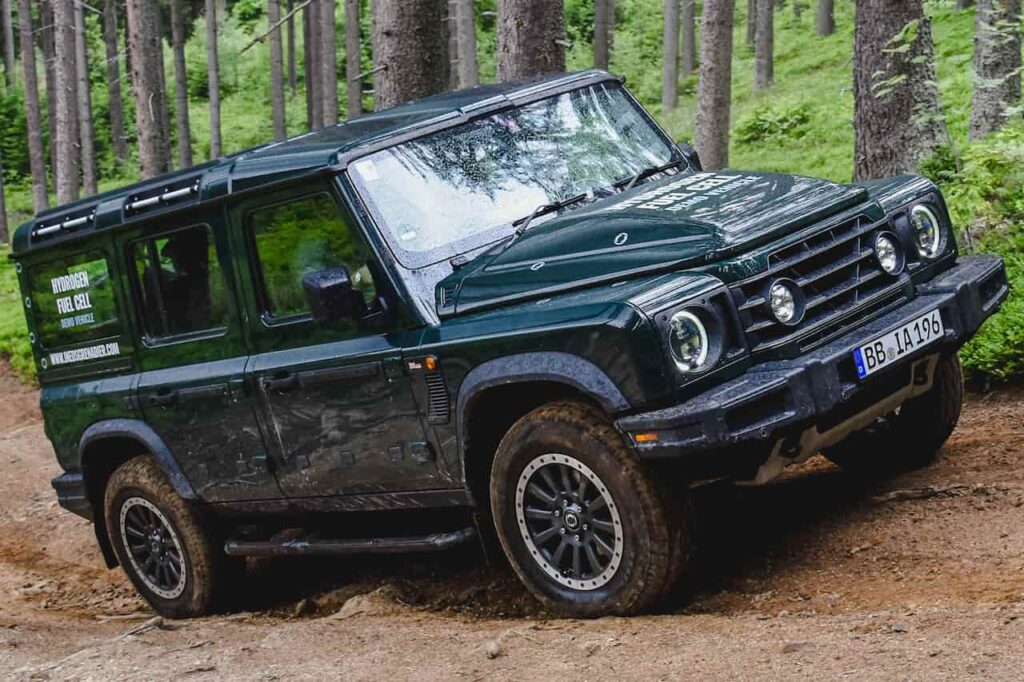
On July 13, 2023, at the annual Goodwood Festival of Speed, Ineos Automotive held the public debut of the prototype of a Grendier Hydrogen FCEV. The company uses BMW’s hydrogen fuel cell stack in this prototype, Autocar reported on July 13, 2023. The German automaker uses Toyota-sourced fuel cells to make the fuel cell stacks for its iX5. Thus, it’s possible that even the fuel cell stack of the Grenadier Hydrogen FCEV prototype consists of fuel cells supplied by Toyota.
The Ineos Grenadier Hydrogen FCEV prototype can store 5 kg of hydrogen and travel up to around 200 km (124 miles). For the production version, Ineos Automotive is targeting a 175% higher range – 550 km (342 miles), which is quite ambitious. The prototype has three motors, one at the front and two at the rear. The company aims to launch the production version with four motors, with the additional unit located at the front. It has tested the triple-motor prototype on Austria’s Schöckl mountain, and it’s safe to assume that the production version will be significantly more capable.
The production Ineos Grenadier Hydrogen FCEV could still be 2-3 years away because of a lack of hydrogen refueling infrastructure.
2025 Hyundai Nexo
No company outside Japanese OEMs has shown more commitment to FCEVs in recent years than the Hyundai Motor Group. The South Korean conglomerate is likely to launch no less than four models in this category in the next few years, and one of them will be a new Hyundai Nexo. Its mid-term goal is to increase the annual sales of its passenger and commercial FCEVs globally to more than 110,000 units.
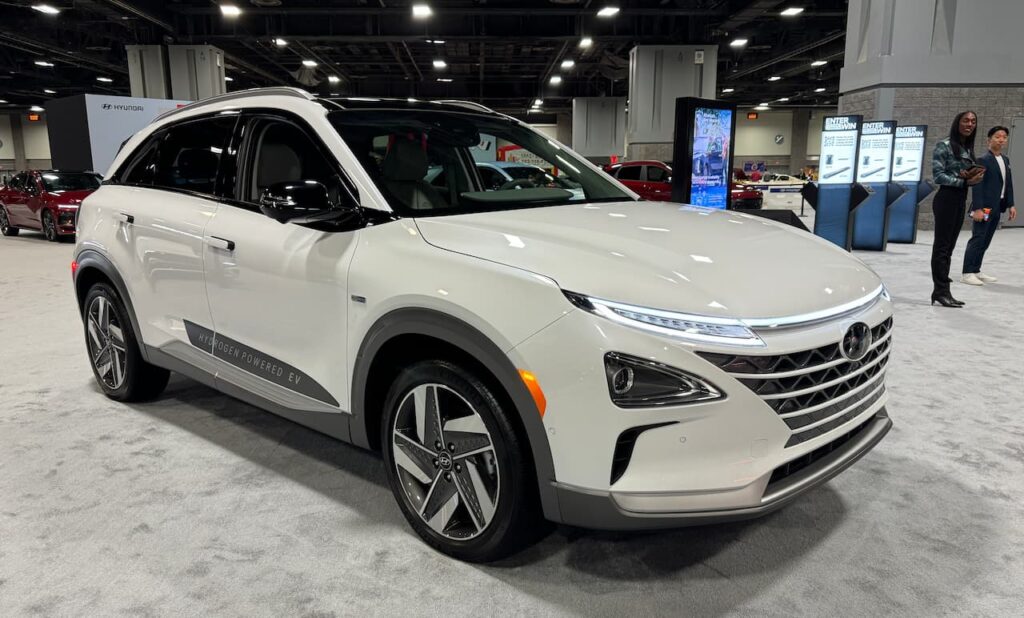
Announcing its commitment to become a carbon-neutral brand by 2045 at the 2021 Frankfurt Motor Show (IAA 2021), Hyundai Motor Company confirmed (via HMG Journal) that the new Hyundai Nexo will be a facelifted version of the original model that went on sale in March 2018.
According to a report South Korean publication Electronic Times released on October 24, 2023, the new Nexo may have an updated version of the current second-gen fuel cell stack, not the third-gen fuel cell stack as originally announced, as Hyundai has postponed the production of the latter. The company has started developing a prototype for series production of the updated model. It plans to build 30,000 units of the new Nexo annually.
The new Nexo will go on sale in South Korea in Q1 2025, and then in the U.S., as per the Electronic Times report. The current Nexo was recently carried over to the 2024 model year in the U.S., and the new Nexo may arrive stateside for MY2025 or MY2026.
Note: Future model’s range figures under Korean certificate standard
Hyundai Staria Fuel Cell
The Hyundai Staria Fuel Cell first appeared in a teaser at the end of the Staria’s digital world premiere on April 13, 2021. The same announcement revealed that the launch of the Staria Fuel Cell will come about in the second half of 2023. The MPV could get the 200 kW version of the third-gen fuel cell stack, which is similar in size to the second-gen system but offers double the power. Hyundai Motor Company says that it has designed the 200 kW version for commercial vehicle applications.
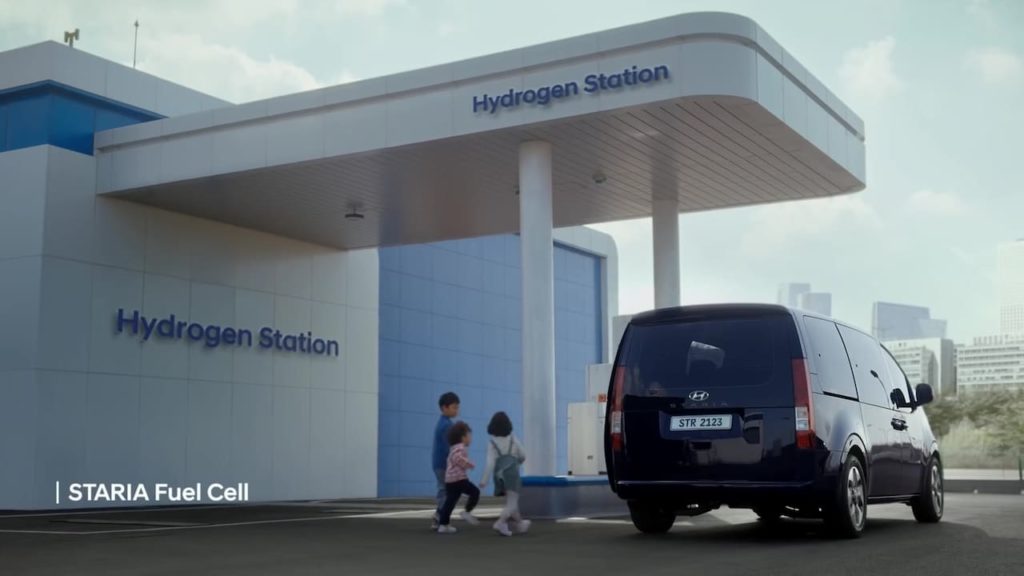
The ETNews report mentioned above states Hyundai has put the Staria Fuel Cell on hold as it doesn’t find the project feasible now. Hyundai hasn’t confirmed this reported development, though.
Hyundai N Vision 74
Hyundai Motor Group has shown several instances of doing the unthinkable when it comes to innovative automotive technologies and design. Its most ambitious attempt will be realizing the production version of the radical Hyundai N Vision 74 hydrogen fuel cell hybrid.
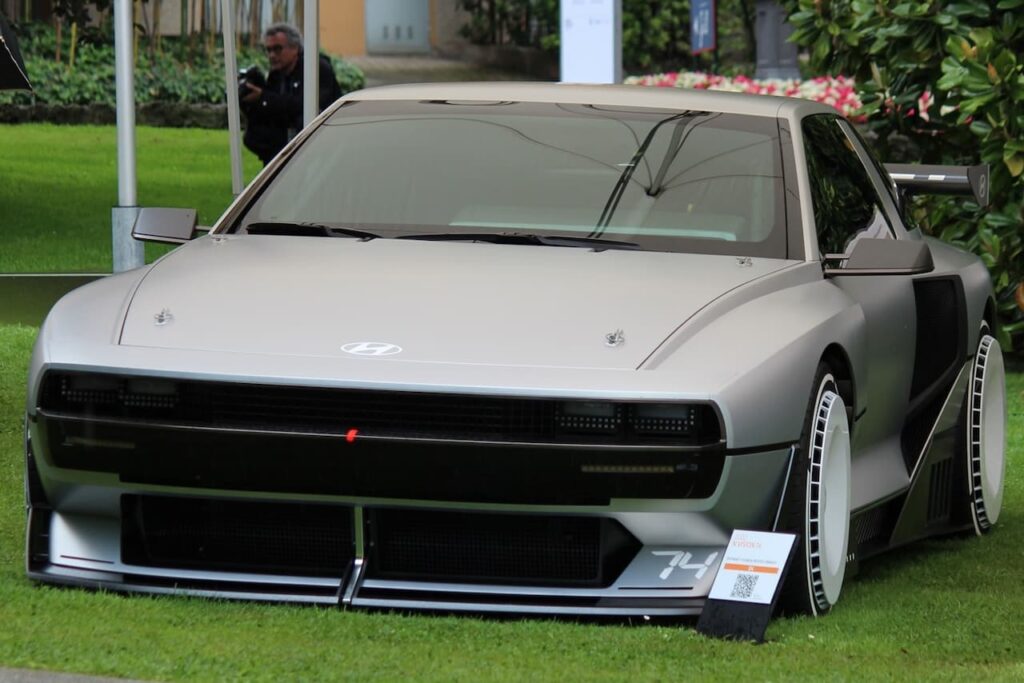
The Hyundai N Vision 74 has an 85 kW fuel cell stack on the front, a T-type 62.4 kWh lithium-ion battery pack between the driver and the passenger, and two 9.3 lb. hydrogen tanks on the rear. The two energy sources power two rear-mounted electric motors, one spinning the left wheel and one spinning the right wheel. In total, there’s more than 671 horsepower and more than 664 lb.-ft. of torque.
The N Vision 74 has a top speed of over 155 mph. Its hydrogen fuel tanks can be refueled from 0 to 80% capacity in just five minutes. The battery pack has double the normal operating voltage – 800 volts, so it probably takes just about 20 minutes for a 10-80% charging session. 373+ miles is the expected driving range of the hydrogen fuel cell hybrid car.
According to a report Electronic Times released on December 17, 2023, the N Vision 74’s final version will enter production in the first half of 2026. Limited to just 100 units, 70 of those will be sold to customers, with the remaining deployed in motorsport competitions in North America and Europe. 800 horsepower, ~3-second 0-100 km/h (0-62 mph) acceleration time, and 400-500-km (249-311-mile) range are the targeted specifications of the production model.
Kia FK/Hyundai FK
On September 7, 2021, Hyundai Motor Group unveiled a new concept car called Vision FK at the Hydrogen Wave Forum. The company didn’t reveal the brand, but we’re confident that it’s not a Genesis model. There’s a higher chance of it being a Kia FK (Kia Vision FK), as it looks like a design evolution of the Stinger.
The Vision FK concept is unique compared to all other passenger hydrogen FCEVs we have seen so far. That’s because the two-door sports car is a plug-in hybrid hydrogen model. It clubs a fuel cell energy converter with a plug-in powertrain that powers the rear wheels. With a system power of more than 500 kW, the Vision FK can finish a 0-100 km/h (0-62 mph) sprint in less than four seconds. The range is quite impressive, too; HMG expects it to cover a distance of more than 600 km (373 miles).
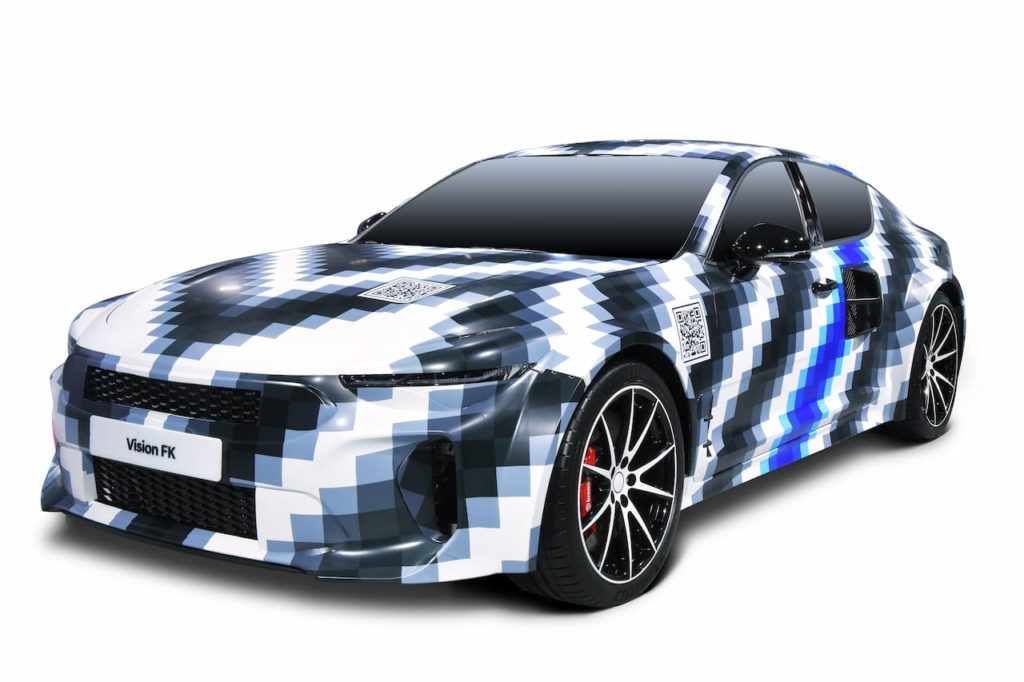
Albert Biermann, the former President and Head of R&D Division, HMG, says the Vision FK prototype is “a bit of technical overkill,” but at the same time, an exciting challenge for the company’s engineers. The company jointly developed its extremely complicated power electric system with Rimac Automobili, in which it has a 12% stake. Development of all other systems took in-house, though. HMG hasn’t confirmed the launch of a production version, but seeing how the prototype looks far more advanced than simply a design study, it seems like there’s a full interest in bringing this car to the market.
Kia Carnival FCEV
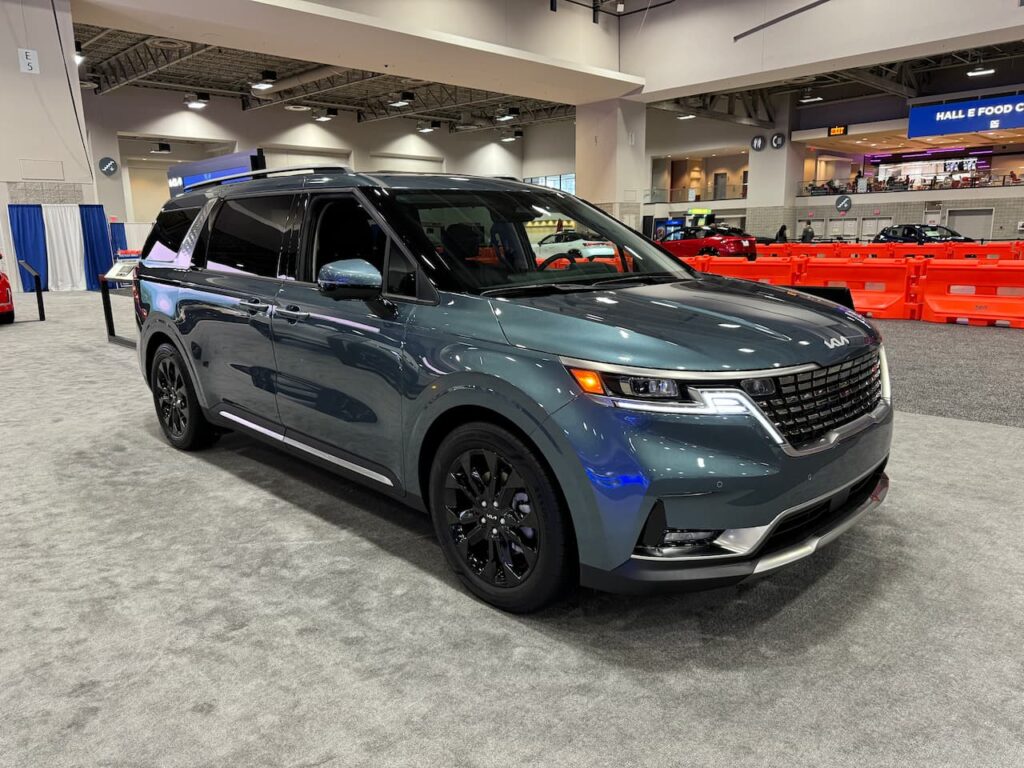
Kia is reportedly going all in electrifying the Carnival, planning a hybrid, a battery-electric, and even a hydrogen model. On September 14, 2022, Maekyung.com reported that Kia plans to start producing FCEVs in 2027. It will begin with military applications and launch a Carnival FCEV later, as per the South Korean publication. It seems like the company will start offering a hydrogen fuel cell electric powertrain in the Carnival in its fifth generation, not the current one.
Land Rover Defender Fuel Cell Vehicle
Jaguar Land Rover is considering launching a Land Rover Defender hydrogen FCEV. The British automaker has developed a prototype under ‘Project ZEUS’ for a feasibility study. A fully battery-powered electric variant of the Defender is reportedly also in the works, but a hydrogen fuel cell electric variant could complement it.
Video Source: YouTube/LandRoverNederland
Dr. Pratap Rama presented the Land Rover Defender hydrogen prototype at the ‘Hydrogen and Fuel Cells – Here and Now’ event on June 28, 2022. Back then, Dr. Rama was the Group Leader for Hydrogen Powertrain at Jaguar Land Rover. In September 2022, he became the Senior Manager for Hydrogen Fuel Cells at the company. Zeus is a GBP 17.6 million (USD 22.35 million) project, and GBP 8.7 million (USD 11.05 million) or nearly half of that investment is coming from Advanced Propulsion Centre UK (APC UK).
Gareth Potter, Project Manager – Hydrogen Fuel Cell Electric Vehicle, Jaguar Land Rover, has posted a picture that shows the integration and packaging of the Land Rover Defender FCEV’s core components on LinkedIn. The image, clicked during Dr. Rama’s presentation at the Cenex LCV 2022 on September 7, 2022, shows that pure-electric Defender has an AWD drivetrain layout achieved with two 147 kW motors and a 16.7 kWh battery pack with a power output of 340 kW. The latter lies under the vehicle floor.
Advantages like high energy density, rapid refueling, and minimal range loss in low temperatures are attracting JLR to hydrogen fuel cell technology to convert its larger, longer-range SUVs, including models that customers would use in extreme environments into zero-emission vehicles.
Range Rover FCEV
If Land Rover chooses to deploy a fuel cell system in the Defender for mass production, it could expand its application to the Range Rover. According to a report from Autocar, Nick Miller, the Range Rover Product Chief, has said that the MLA architecture that debuted in the flagship SUV’s fifth-gen model can accommodate a hydrogen powertrain as well.
Toyota Hilux hydrogen
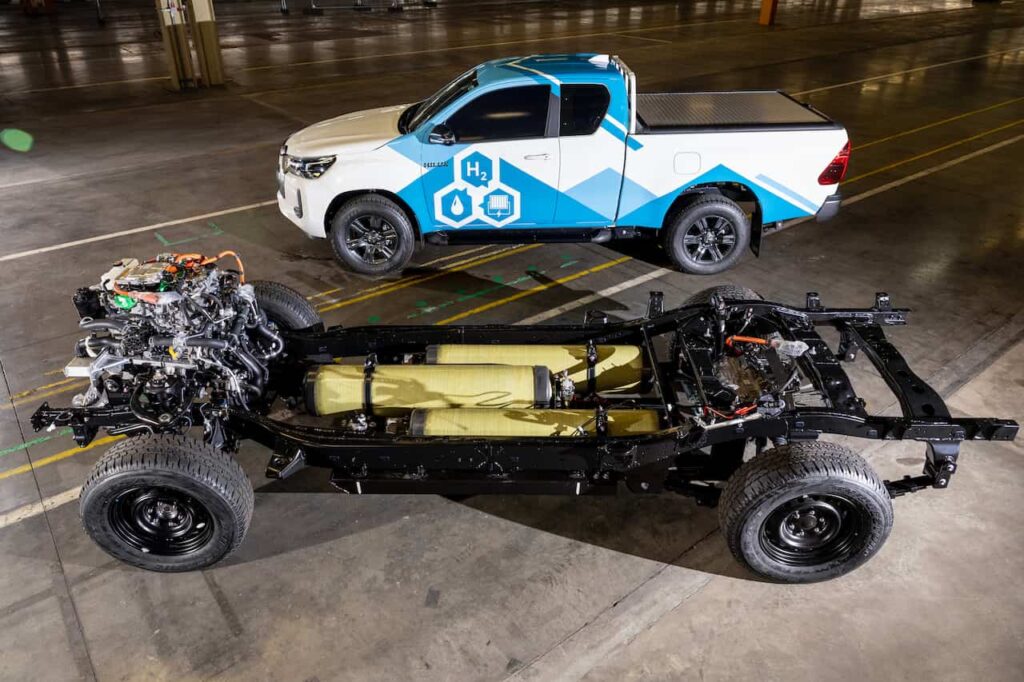
A Toyota-led consortium in the UK has developed a hydrogen fuel cell-powered Hilux. Toyota has used its second-gen fuel cell components to convert the current, eighth-gen Hilux into a fuel cell electric vehicle.
The Toyota Hilux hydrogen prototype features three fuel tanks below the cabin floor and a battery in the rear load deck. The latter is responsible for storing electricity generated on-board by the fuel cell. Toyota expects the hydrogen fuel cell-powered Hilux to deliver a range of more than 365 miles.
The Hilux hydrogen prototype was made at Toyota’s Burnaston plant in the UK. Toyota had said during the development period that if the project turns out to be successful, it will prepare for small series production. The company plans to build ten prototypes in total and will test them around the world.
In parallel, Toyota is working on the third-gen hydrogen fuel cell technology and plans to commercialize it in 2026. The future version will deliver a higher power density and could lead to a 20% higher driving range. Moreover, its technical advancement and increased production volumes may lower costs by more than 33.3%. The series production Hilux hydrogen FCEV may head to dealers featuring the next-gen fuel cell technology.
Featured Image Source: Hyundai Motor Group
